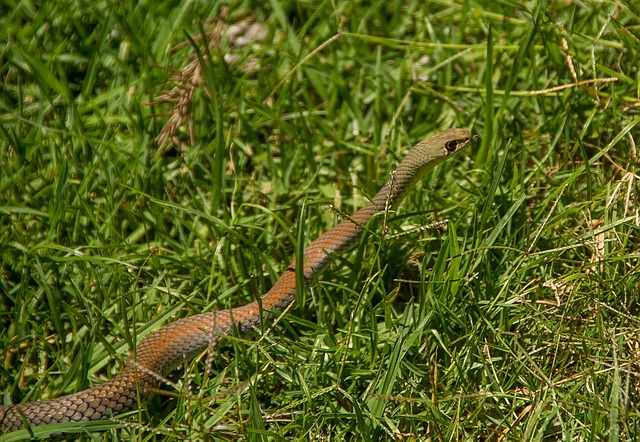Everyone knows that snakes slither, but there is more to it than meets the eye. There are several diffirent methods of locomotion used by snakes to move from point A to point B. Let’s take a look at three most common types and how they are used.
The methods used by snakes to move from point A to point B
Most snakes employ serpentine locomotion which consists of coordinated muscle contractions to push against the substrate and move forward.
Other species, such as sea snakes and some arboreal snakes, use a form of undulatory swimming, where the body intermittently contracts that, creates a wave-like motion causing them to glide through the air or water.
Some desert-dwelling snakes have adapted sidewinding locomotion which drums up less dust and helps preserve their moisture reserves.
Regardless of the method used, skilled snake movement is one of nature’s greatest spectacles.
The methods
Lateral Undulation
This is probably the most iconic snake movement; you see it in cartoons and movies all the time.
Lateral undulation is a wave-like motion that snakes use for rapid movement over long distances, such as when they are trying to escape from predators or find food.
To do this, snakes use their muscles to press against the ground and propel themselves forward in a side-to-side undulating fashion.
Concertina
The concertina method of locomotion is often used in tight spaces where there isn’t enough room for lateral undulation or when navigating difficult terrains such as rocks or tree branches.
In this type of movement, snakes use their muscles to push their body off the ground and then coil around objects like rocks or branches before pushing off again.
This allows them to make short hops across obstacles instead of going around them.
Rectilinear Locomotion
Rectilinear locomotion is seen less often than lateral undulation or concertina but is still an important skill for some snakes.
In this type of motion, the snake moves forward in a straight line using its body weight and muscles like oars on either side of its body to create thrusting motions that propel it forward.
This is mostly used by smaller species, such as garter snakes which have difficulty with lateral undulation due to their size.
Conclusion.
Snakes have evolved many different methods of locomotion over millions of years in order to survive in changing environments and locate food sources. From lateral undulations over wide open spaces, concertinas through cramped areas, and rectilinear movements over short distances – these animals have adapted many ways to get from one place to another quickly and efficiently.
As a snake owner, understanding how your pet moves can help you create an environment that will better suit its needs for exploration and hunting prey.




